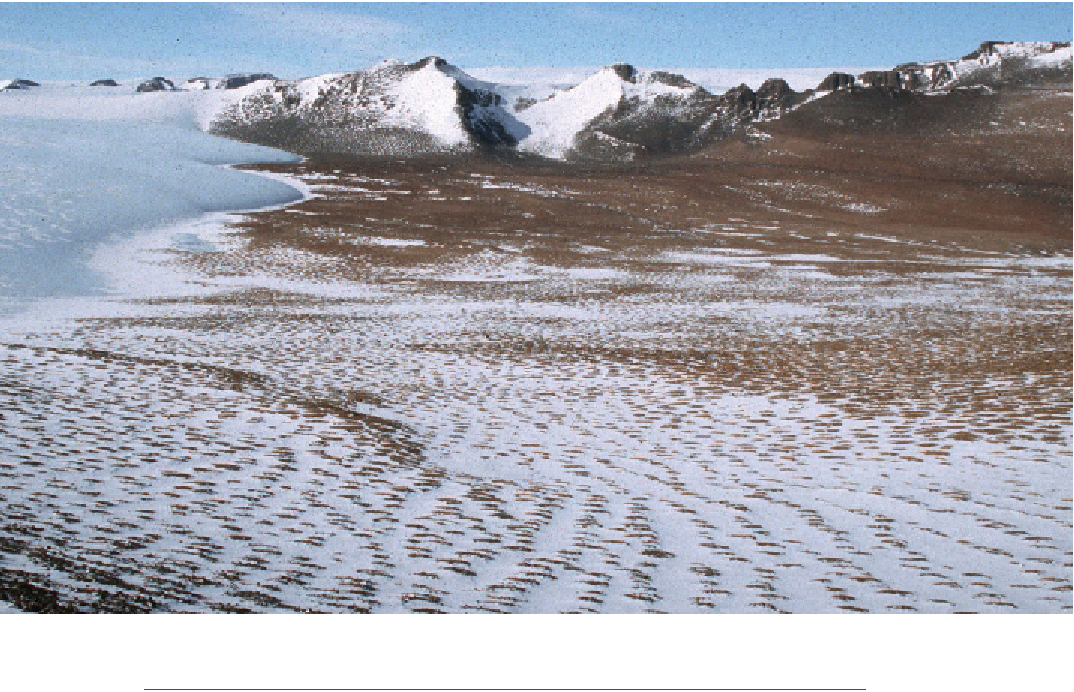Geoscience Reference
In-Depth Information
Figure 6.21
Periglacial sorted circles, Davis Valley, produced by ice wedging in the soil forcing
smaller rocks into the centre. (Credit: Peter Convey, BAS)
of the marine ecosystem. Nevertheless, they have a considerable impact on terrestrial
ecosystems on the local scale, through their input of nutrients through manuring,
and the physical impact of trampling. More remote impacts are also detectable
through aerosol transfer of nutrients. In contrast, true terrestrial vertebrates are
extremely limited, including a single endemic passerine (insectivorous) bird and
three freshwater ducks in the sub-Antarctic and two scavenging sheathbills, one of
which is also found in the maritime Antarctic. Terrestrial mammals, reptiles and
amphibians are absent.
In the absence of vertebrates, invertebrates dominate Antarctic terrestrial
ecosystems. Even in the more benign sub-Antarctic many groups are not
represented, and the most diverse insect groups are Diptera (
(flies) and Coleoptera
(beetles). Molluscs and annelids are present along with the micro-arthropod groups
of Acari (mites) and Collembola (springtails) and micro-invertebrates (nematodes,
tardigrades, rotifers). In concert with conditions becoming more extreme, maritime
Antarctic faunas include few higher insects, with only two chironomid midges

Search WWH ::

Custom Search